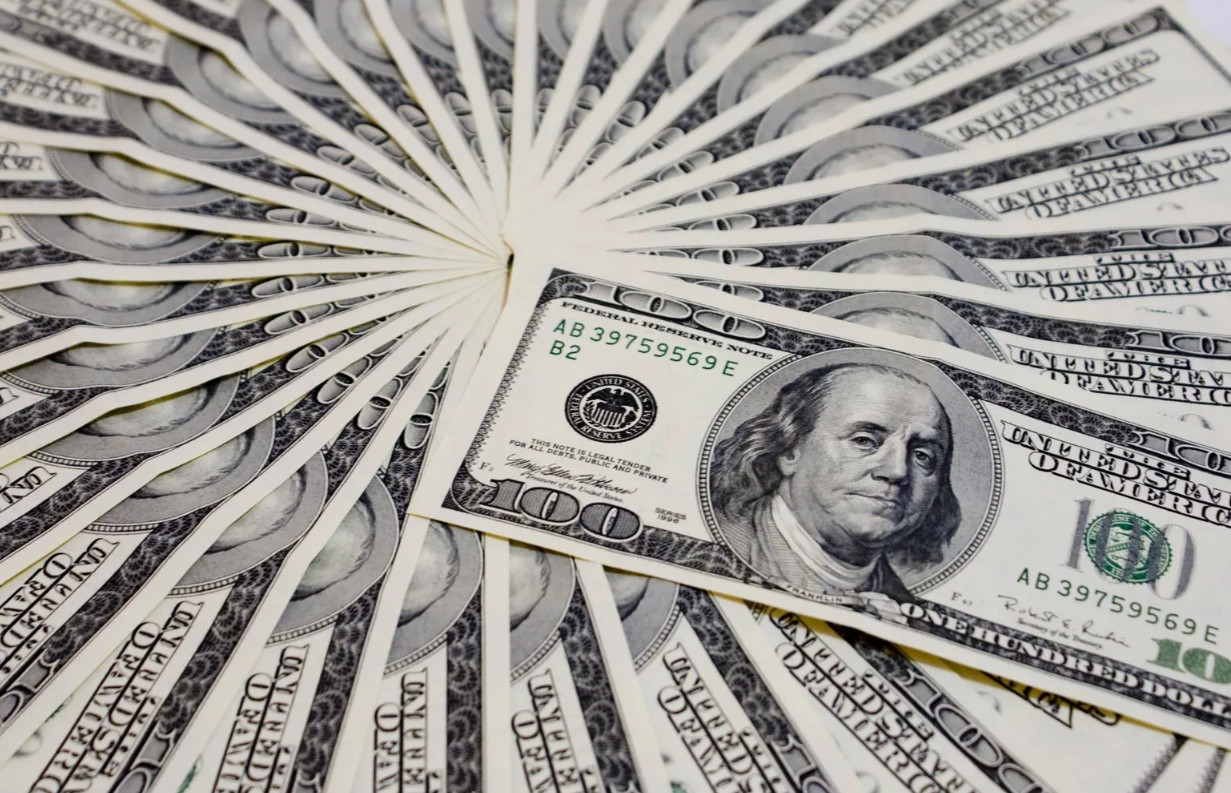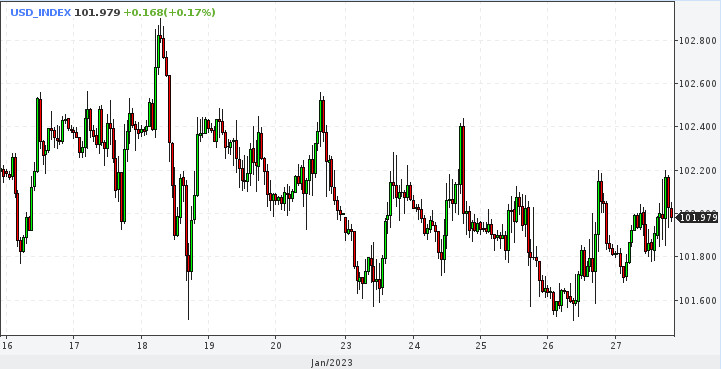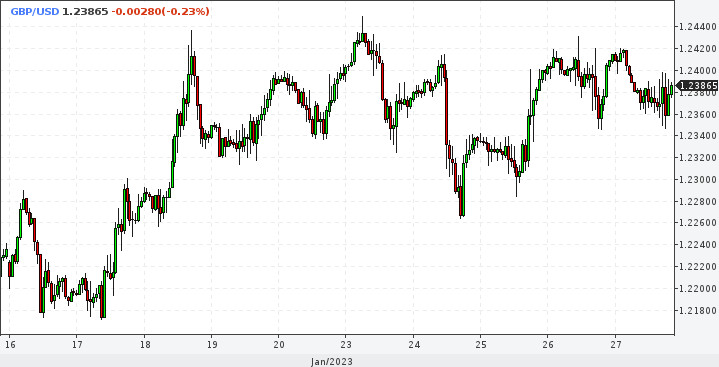
Market sentiment is mixed, with traders trying to catch the most accurate signal coming from U.S. data. While people are almost certain that the Federal Reserve will be less aggressive at the February meeting, some factors are still playing on the dollar's side.
The dollar index is trying to stabilize above 102.00 at the end of the trading week. But as long as it trades below 103.00, the risks of further losses are increasing. Despite the rebound, the dollar is still under pressure, a sustained breakthrough of the 101.50 level would accelerate losses into 101.30 and below.

The dollar was initially supported by the fact that the GDP report turned out to be surprisingly strong. Real GDP increased at an annual rate of 2.9% in the fourth quarter of 2022, faster than the 2.6% estimate.
Traders took the numbers as a sign that the Fed would have to reconsider the idea of slowing the rate hike cycle. Soon the U.S. currency reversed direction, as the markets began again to discuss the topic of recession, which, according to some estimates, is inevitable in the current situation.
The numbers allegedly do not reflect the real picture. The hints they give contradict more recent economic surveys suggesting a recession is inevitable.
"Growth likely will be much weaker in Q1; we are penciling in a -2%," says Ian Shepherdson, Chief Economist at Pantheon Macroeconomics.
Commerzbank believes that some "hard" December data, such as retail sales and industrial production, were already very weak, which could be a sign that the economy is noticeably losing momentum.
"A rate hike by 'only' 25bp at the next Fed meeting is now increasingly likely following numerous comments of Fed officials along these lines. As long as everything continues to point towards a recession, the market is unlikely to rethink its expectation of the Fed lowering interest rates again in the second half of the year, which constitutes the basis of the current dollar weakness," says Esther Reichelt, FX Analyst at Commerzbank.
It is also interesting to see the reaction of the PCE, an important indicator for the Fed. The Core Personal Consumer Expenditures Index rose 0.3% for December, but declined from 4.7% to 4.4% year-over-year. The overall PCE price index climbed 0.1%, bringing annual PCE inflation down to 5% from 5.5% previously.
Overall, there is a softening trend. This is supposed to put pressure on the dollar. However, the market at one point supported the U.S. currency ahead of the interest rate decision.
Traders are confused, hence these uncoordinated movements. But they are likely to remain calm in the coming sessions until the Fed meeting.
The Fed's decision will be the main event in the short-term calendar of the dollar and will occur amid a period of its weakness. Over the past month, it has fallen against all of its G10 peers except the Norwegian krone.
With inflationary pressures easing and global economic growth prospects improving, analysts are no longer expecting new records for the dollar. However, it is not the time to bury it yet either.
Surprises are quite possible, as any economic recession in the U.S. and the world could make it more attractive.
One of the key drivers of the dollar's strength in 2022 has been the decline in stock markets. If another bout of weakness in this direction is triggered by a more serious economic deterioration, the dollar could rise.
What the pound has to say
So far, it looks weak and this weakness has coincided with the rise of the GBP/USD pair above 1.2000. The highs are at 1.2450 this week.
To make any conclusions, you should look at the closing of the week. Judging by the technical picture, there is a strong resistance around 1.2340-1.2450. Will it remain or is it possible to bet on 1.2500.
Looking at the general economic picture of the US and UK, it is impossible not to notice the distinctive features of the situation. The pound will be losing because of the recession in the country.

Last week's GDP data for December clearly showed that the UK economy is not yet out of recession. Although there is a chance that the economy will still not enter a technical recession.
The Bank of England's interest rate forecast looked less certain after the split over the December decision. Since then, however, economic indicators have improved.
This means an automatic increase in the central bank's GDP forecasts and possibly also downward pressure on inflation estimates.
It is possible that there will be more hawks in the Monetary Policy Committee (MPC) next week. Meanwhile, the implied peak bank rate has fallen to 4.5% since November.
If the BoE does raise the rate by 25bp, it will be the last time in the cycle of tightening monetary policy. Next year it will soften conditions to support the economy despite inflation, analysts say.
As for the pound, it could rise given the dollar's weakness. The long-term and global downtrend of GBP/USD pair persists below the key resistance levels of 1.2750, 1.2900. This speaks in favor of short positions.
A consistent breakdown of the support of 1.2130, and then 1.2035, 1.2000 is able to return the pound to the long-term bear market zone.





















